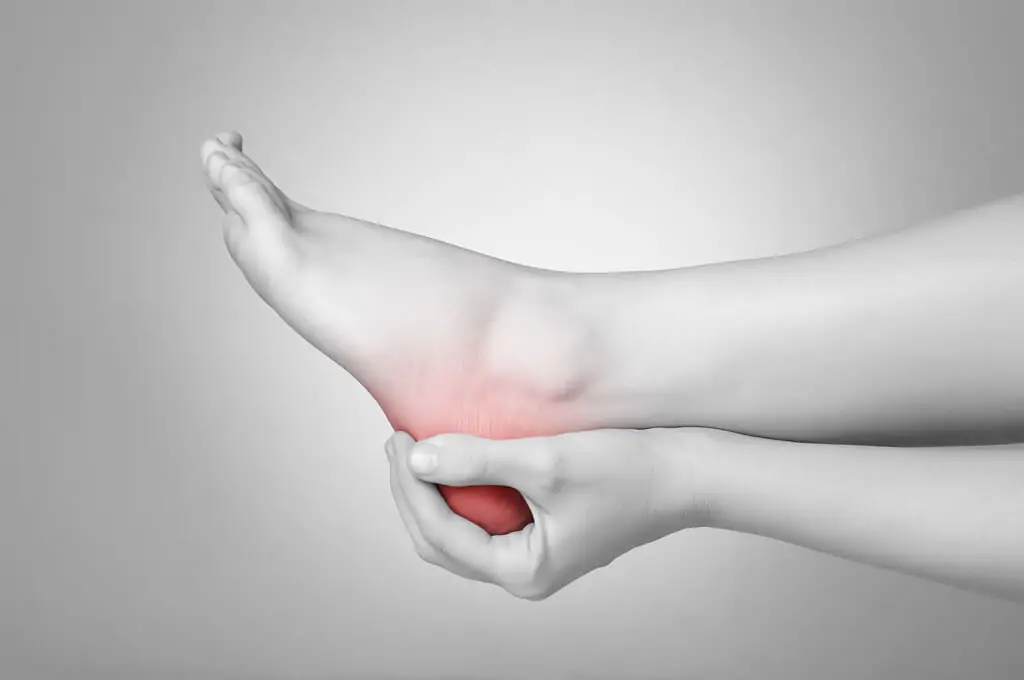Pediatric Heel Pain | Heel Pain In Children in Allentown

Pediatric heel pain differs from heel pain experienced by adults, although they both are usually caused by plantar fasciitis (inflammation of the plantar fascia which connects the heel to the toes).
As adults, the symptoms of plantar fasciitis usually occur in the morning when we get out of bed, and subside as we move around and the tissue warms up. Pediatric heel pain, generally speaking, doesn’t diminish as the child moves around – in fact it may get much worse.
Symptoms of heel pain in children:
- Pain in the back or bottom of the child’s heel
- Limping
- Walking on the toes
- Difficulty participating in normal activities or sports
Pediatric heel pain is very common due to the nature of a child’s growing feet. Between the ages of 8 and 14, the bones in a child’s foot grow faster than the tendons, and the heel bone (calcaneus) doesn’t fully develop until roughly 14. Until then new bone continues to form in the area of the growth plate, a relatively weak area at the back of the child’s heel. This uneven development means that the heel cord is relatively short compared to the leg bone, which causes the tendon to pull on the growth plate of the heel. When this pulling happens repeatedly, putting stress on the growth plate, heel pain results.
Because diagnosing heel pain in children can be a challenge, a podiatric foot and ankle surgeon is the best qualified medical professional to diagnose the underlying reason for the pain and to develop a treatment plan to alleviate the problem. Early intervention is extremely effective in correcting problems that may result in lifelong pain and discomfort.
Pediatric heel pain may be caused by the following conditions:
- Overuse – The heel’s growth plate is frequently irritated by running and playing on hard surfaces. Children and young teens involved in soccer, track, or basketball are the most likely candidates to suffer from heel pain for this reason. Achilles tendinitis (inflammation of the achilles tendon) and plantar fasciitis are also frequent causes of heel pain in children.
- Fractures – It’s common for a young child or teen to “tough it out” and dismiss the pain that comes with a stress fracture, a hairline break resulting from repeated stress on a bone. In children under ten, acute fractures can result from a jump as low as 2 or 3 feet. If a fracture doesn’t heal properly, arthritis will develop and the same area of the bone will be more likely to fracture again.
- Sever’s Disease (calcaneal apophysitis) – This is the most common cause of heel pain in children. Pain results from an inflammation of the heel’s growth plate due to muscle strain and repetitive stress, especially in those children who are highly active or obese.
- Tendo-achilles Bursitis – Injuries to the heel, diseases such as juvenile rheumatoid arthritis, or wearing shoes which don’t cushion the foot properly can cause an inflammation of the fluid-filled sac (bursa) between the achilles tendon and heel bone.
If your child complains about or exhibits any signs of weakness or pain in their feet, ankles, or lower legs, or exhibits a continued lack of coordination, please call our office for a thorough diagnosis. One of our podiatrists will examine your child to evaluate their condition and recommend a course of treatment.
A treatment plan to alleviate your child’s foot pain or heel pain may include :
- Reducing activity to rest the irritated muscles, tendons, and/or ligaments
- Custom made orthotics to wear in-shoe to balance the foot correctly and cushion sensitive areas
- Over the counter pain medications
- Physical therapy to strengthen weak or injured areas of the foot and ankle
- Immobilization
- In severe cases, surgery may be required to lengthen a tendon or correct other problems


